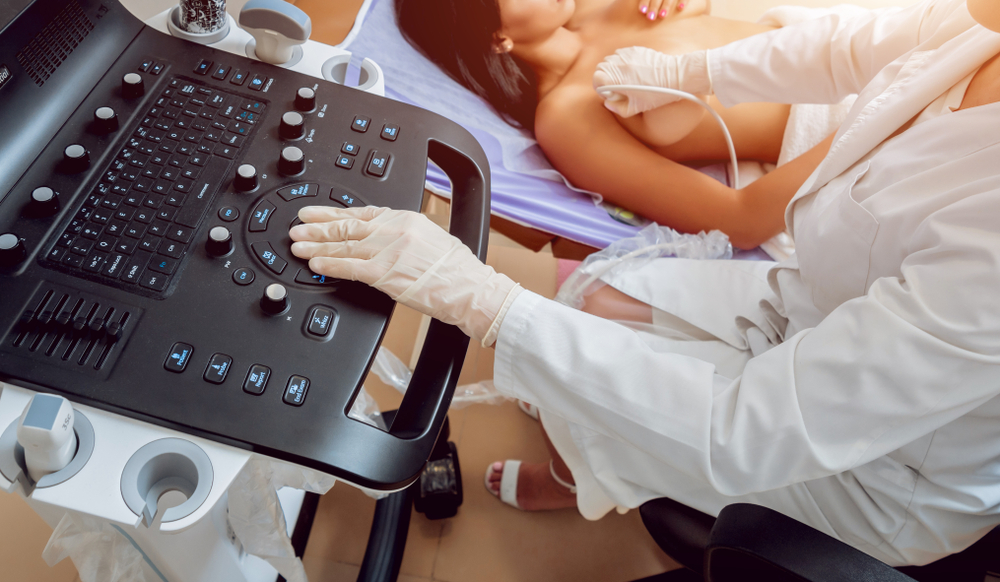What is breast ultrasound?
- A breast ultrasound uses sound waves to make a picture of the tissues inside the breast. A breast ultrasound can show all areas of the breast, including the area closest to the chest wall, which is hard to study with a mammogram. Besides, it is used to see whether the breast lump is filled with fluid (cyst) or if it is a solid lump.
- An ultrasound does not replace the need for a mammogram; however, it is often used to check a problem seen on a mammogram.
- Breast ultrasound does not use X-rays or other types of radiation.
Clinical purpose
- Look at the breast in younger women ( because their breast tissue is often more Dense, so mammogram shows less detail )
- Check for breast lumps by self-examination, physical examination, or mammogram; and differentiate its contents.( solid vs. cyst )
- Find the cause of breast symptoms such as pain, swelling, and redness
- Imaging-guiding procedure ( e.g., sono-guided biopsy, aspiration....etc )
- Follow-up

How it is done?
The procedure is usually performed by a specially trained technologist ( female ). A clear, water-based conducting gel is applied to the skin over the area being examined to help with the transmission of the sound wave. The ultrasound transducer ( a handheld probe) is then moved back and forth over the breast. A picture of the breast tissue can be seen on the monitor. The procedure is usually between 15 and 30 minutes. More time may be needed if a breast exam is to be done or if a biopsy is also planned.
Risks
- There is no known risk in having a breast ultrasound examination.

